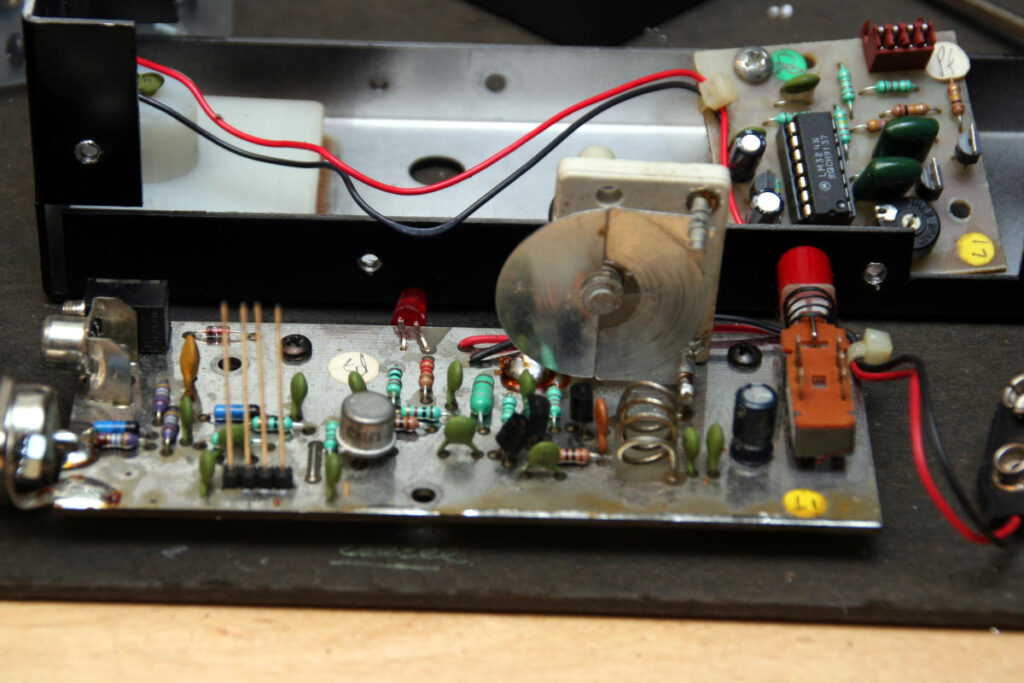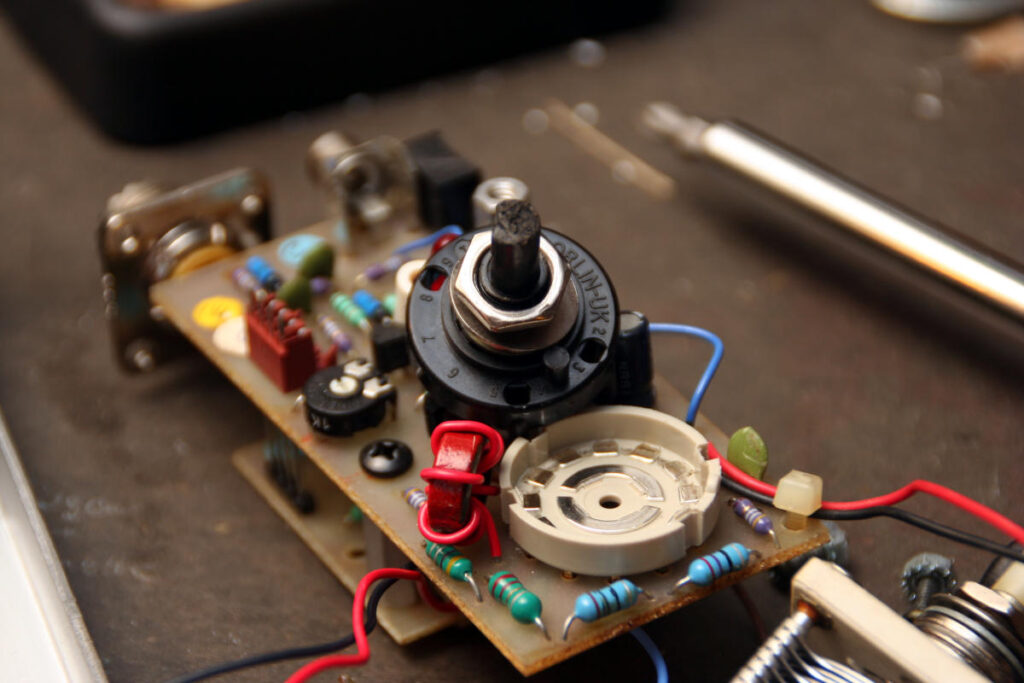While browsing radios on ebay, I came across a couple of MFJ antenna analyzers: an MFJ-207 and MFJ-208.
They were both being sold as “For parts” and the person selling them wasn’t able to test them. From the description and the pictures that were posted, my expectations weren’t very high. The price was pretty low, and I figured if they worked I’d have a couple of antenna analyzers for pretty cheap and if they didn’t, I’d have an interesting project on my hands that I could learn something from.
They arrived in the mail today and I had a quick look inside both of them. Off the bat the 207 is going to need a new band selector dial. It looks like it’s supposed to be a one of those multi-position switch knobs, but if it was it isn’t anymore. On the 208 it looks like a new variable plate capacitor is in order. I’m no expert but I’m pretty sure the plates aren’t supposed to touch when the knob is turned. I’ve also never seen a variable plate capacitor with just two plates (one moving, one stationary).
I’ll have to spend more time and go over them more closely, but if these two things are all that’s wrong with the two analyzers, then this should be a pretty easy refurb project for me (provided I can find the parts). Fortunately the manuals for both of them are available on the MFJ website, and the 207 manual even has a schematic in it.
This should be interesting. Pictures to follow



